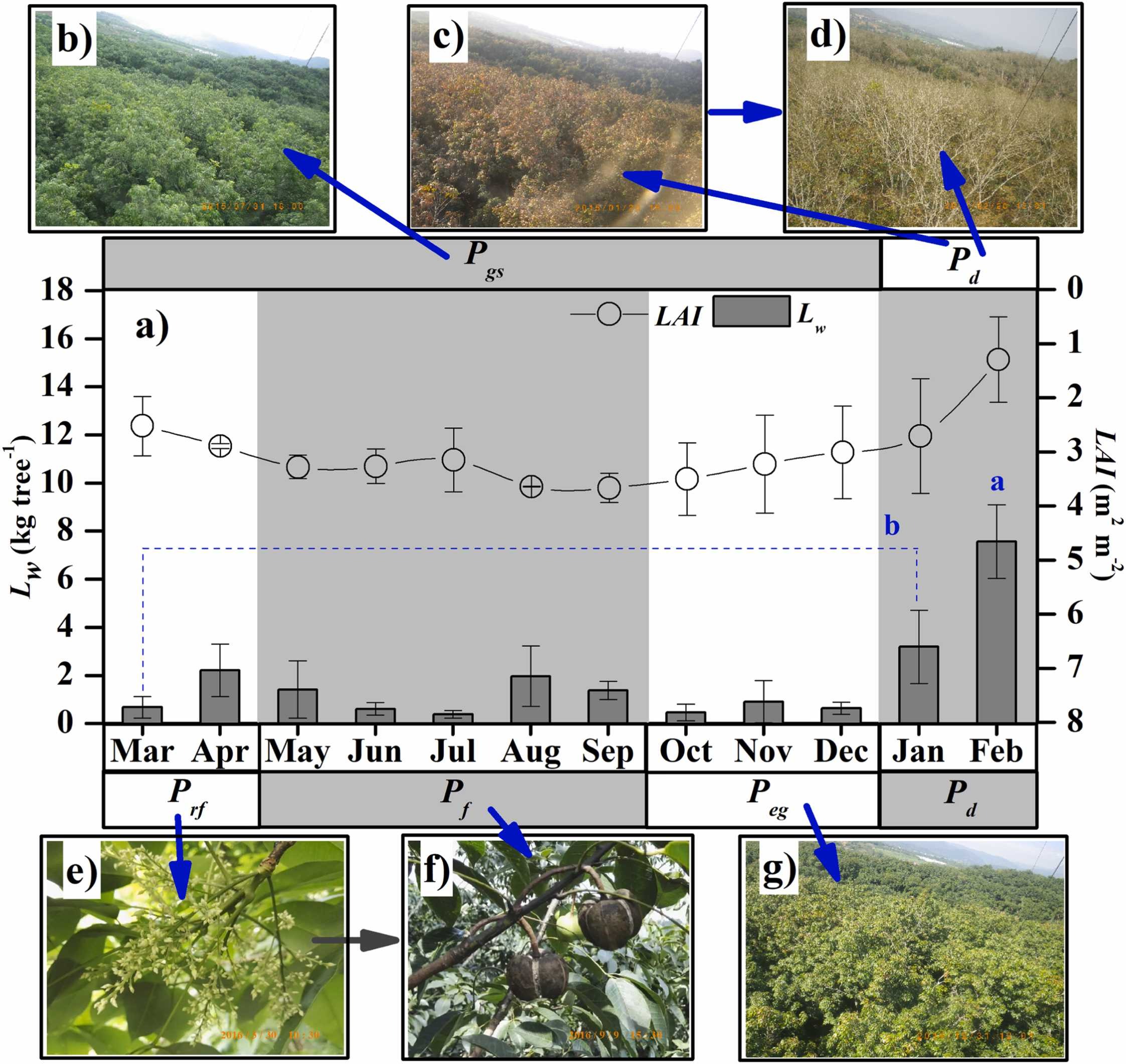Rubber trees (Hevea brasiliensis) are widely known to have high economic and defensive values. However, little is known about how the ecohydrological and coupled processes between the carbon gain and water use efficiency (WUE) of rubber plantations respond to phenological changes and site heterogeneity, i.e., the planting density and stand age.
In a study published in European Journal of Agronomy, researchers from Xishuangbanna Tropical Botanical Garden (XTBG) tried to explore the responses of the carbon-water coupling of rubber plantation to phenological changes, stand ages, planting densities, as well as hydrothermal conditions.
The researchers used a four-year (2013–2016) continuous dataset of biometric survey, sap flow and phenology of rubber trees in Xishuangbanna to examine the WUE in response to phenological changes and cold stress.
The annual life cycle of rubber trees was divided into four phenological periods rather than into months or seasons, which was more appropriate for exploring the ecophysiological characteristics of the rubber trees.
Water-use efficiency (WUE) revealed the survival strategy of rubber trees. The WUE values of the rubber trees were generally and significantly higher during the fruiting period than during other phenological periods, implying that this tree species might adjust its survival strategy to strengthen the carbon and water coupling (WUE) in response to the low fruit-set rate and cold stress to adapt to the local climate and environment.
They further found that the planting density and its interactive effect with stand age significantly depressed the effectiveness of the survival strategy and the growth of the rubber trees.
“Therefore, the planting density and stand age must be well considered during the cultivation and management of rubber plantations in Southwest China,” said ZHANG Yiping of XTBG.
Contact
LIN Youxing Ph.D
Key Laboratory of Tropical Forest Ecology, Xishuangbanna Tropical Botanical Garden, Chinese Academy of Sciences, Mengla, Yunnan 666303, China
E-mail: linyouxing@xtbg.ac.cn

Annual variation of the phenology in rubber plantations. (Image by LIN Youxing)

